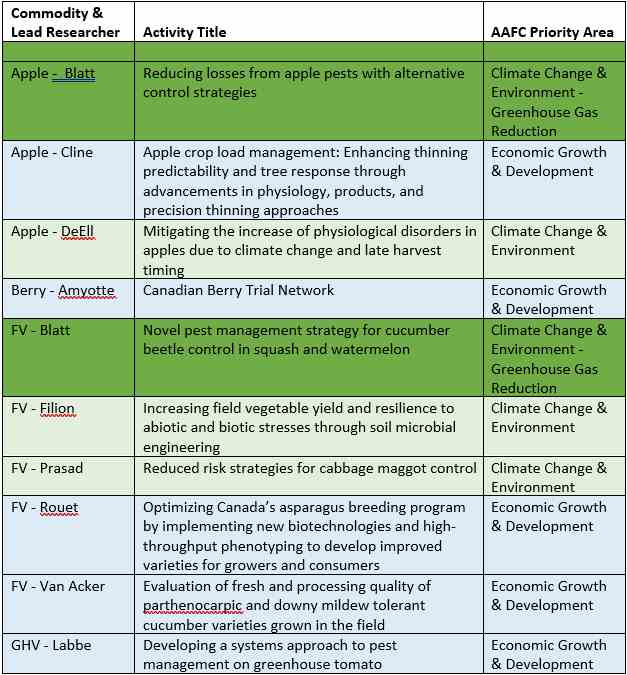Ottawa - We are pleased to share that on January 19, 2023, FVGC submitted our official application for the Canadian AgriScience Cluster for Horticulture 4 to Agriculture and Agri-Food Canada’s AgriScience Cluster Program.
The following table presents the activities that were included in FVGC’s application, for a combined Cluster total of $22.7million over 5-years (2023-28) including $12.7 million AAFC contribution and $9.9 million industry/other government contribution.

A great deal of time and effort has gone into this submission, by all the researchers, industry collaborators and the FVGC team, and it is our hope that we will find success and approval for Cluster 4 funding. AAFC’s goal is to assess applications and send approval or rejection notification letters within 100 business days of receiving a complete application package – stay tuned for more information in May-June.
Source : FVCG.ca